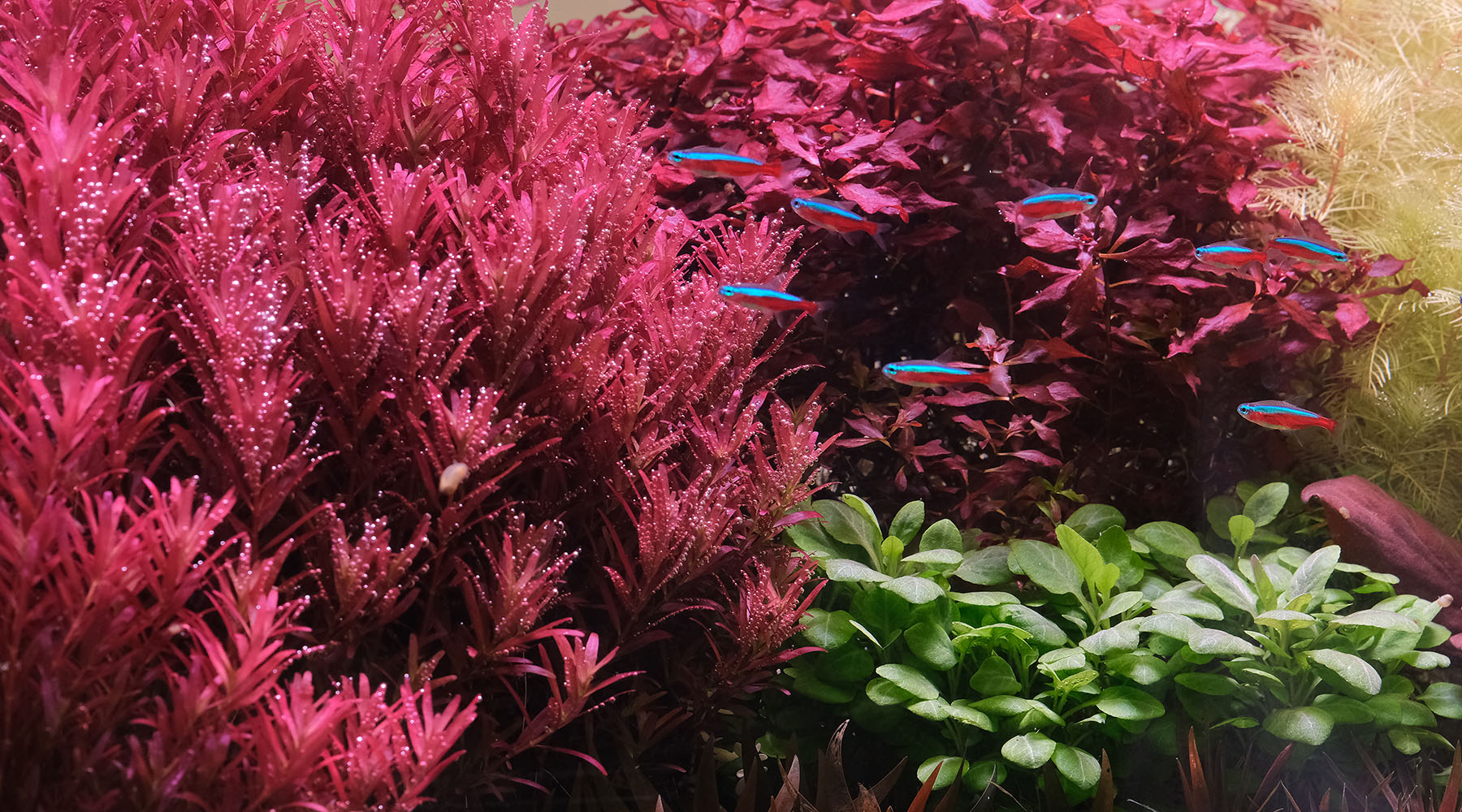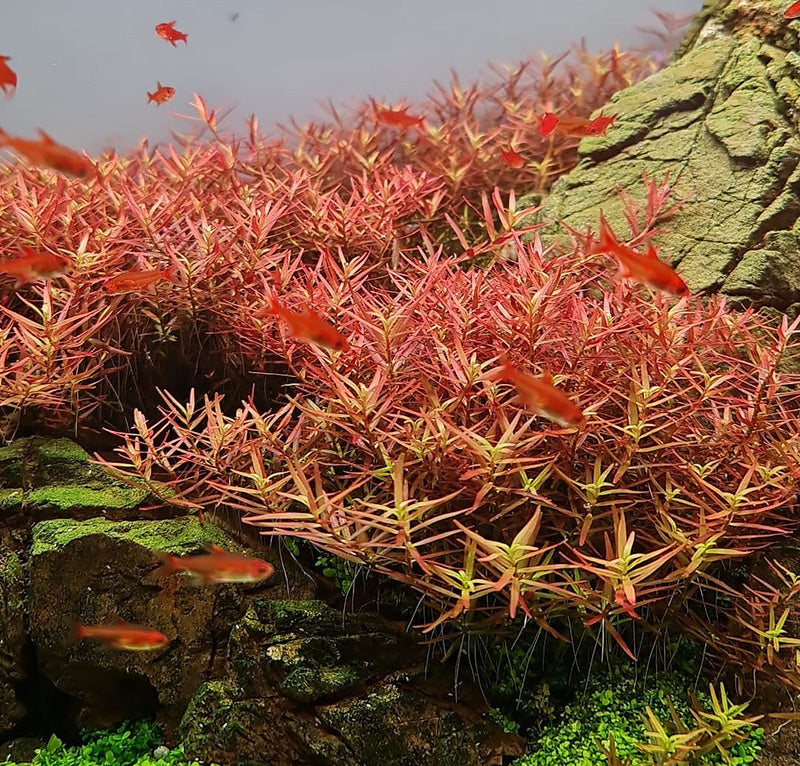Your Cart is Empty
Local Shipping within US, Canada, EU and Australia
Menu

Local Shipping within US, Canada, EU and Australia
Rotala Colour Tips
February 18, 2025 2 min read

Above: Rotala 'Singapore' and Rotala 'SG' under different conditions.
A: Increasing nitrate levels turn new shoots green/yellow.
B: Moderate nitrate levels - slightly orange/green new shoots.
C: Steep and prolonged nitrate limitation turns leaves dark red.
Similar to other members of the Rotala family ('colorata', H'ra', 'Ceylon', etc.), follow these steps for richer reds:
- Use APT1 if you keep more fish, or APT 3 at half or one-third dosage if plant mass is low. Dosing calculator here.
- Stronger light (>150PAR) for 7 hours.
- Trim and replant the healthy tops the 2Hr Way.

Above: side view of Rotala SG (left-most bush). The same plant in the same tank exhibits different coloration as the tank matures (even when fertilisation- APT3 in this case-is kept constant).
In a newly planted tank, new tips are often orange/green because the plant is shorter (receiving less light) and nitrates are higher (less total plant mass).
As the tank matures and plant mass increases, nitrate levels will naturally decrease (due to increased plant uptake). and in 'Summer' the plant is often deep red.
What NO3 measurement should I aim for?
- less than 5ppm: With regular water changes, keeping nitrate levels below 5ppm helps keep algae at bay and is generally indicative of a healthy tank.
- 0 ppm: In most 2Hr Tanks, nitrate levels generally measure zero. Not because we do not dose nitrates, but because the effect of nitrate limitation start to kick in at that zone (in taking water readings, we are always measuring only the residual level, after absorption).
So low nitrates is always good?
Nitrogen is actually a key growth factor for plants, just like we need proteins or carbohydrates. So less is not always better, and the form it takes is important. For species that show better coloration with nitrate limitation, an easy path to success is APT 1 + APT Jazz.

Above: A beautiful aquascape courtesy of a user. Rotala H'ra shows green tips as she transitions from a leaner fertilization regime to APT3. This means that nitrate levels are increasing.
While this is temporary (plants will adapt to the improved nutrition and residual nitrate levels will naturally decrease as plant mass increases), we can also do the following
- Reduce APT3 dosage to half (or one-third).
- Consider switching to APT1 (recommended if fishload is high).
How to transit to APT?
- For tanks that have been grown very lean (most conventional fertilizers), follow these steps:
- Consider APT1 + Jazz(the best time to add is when you replant the tops)
- Start with APT3 at half-dose for the first 2 weeks and gradually increase.
- Remember that nitrate levels are hugely impacted by fish feeding / fish waste. If nitrate levels are high, more moderate feeding often helps- alot.
unlock your true potential
Grow anything, defeat algae, create amazing aquascapes
























